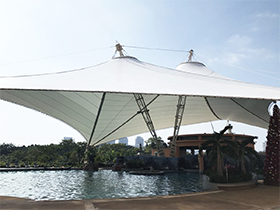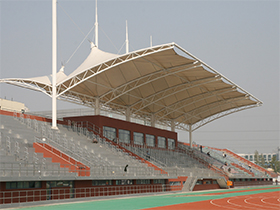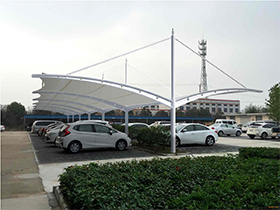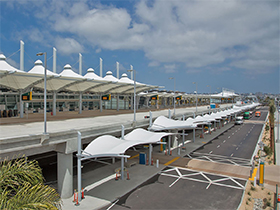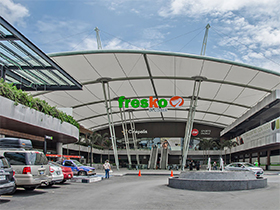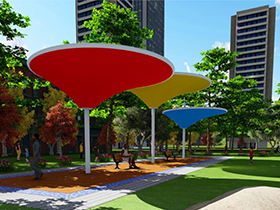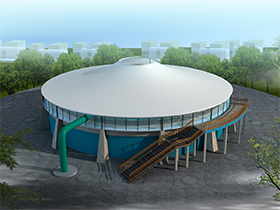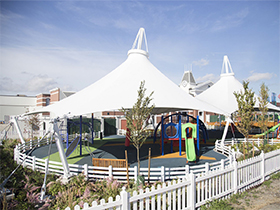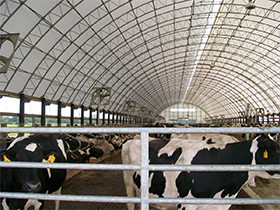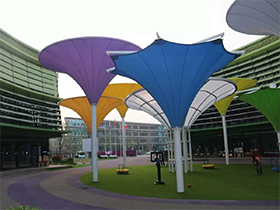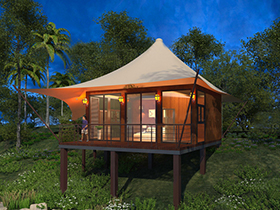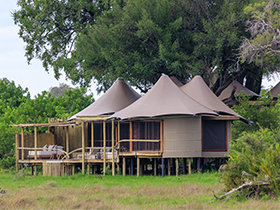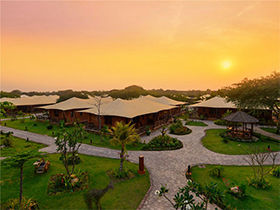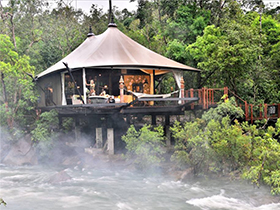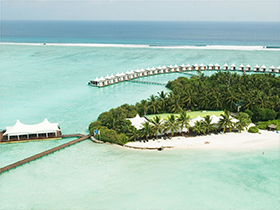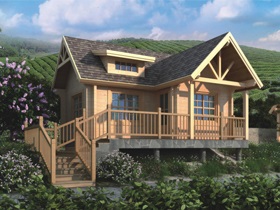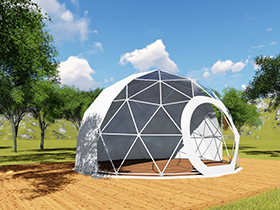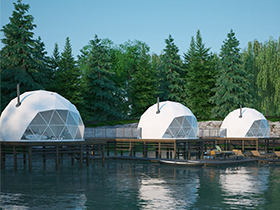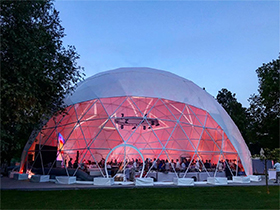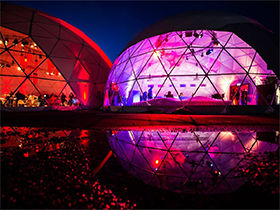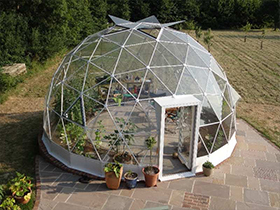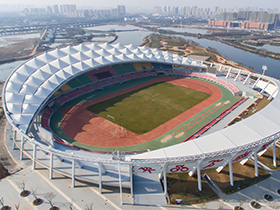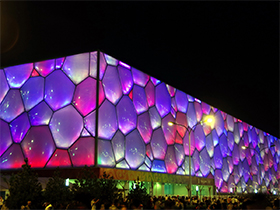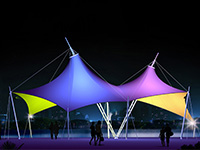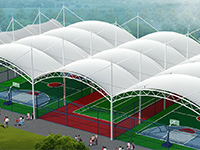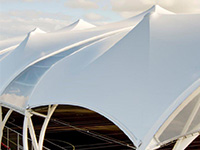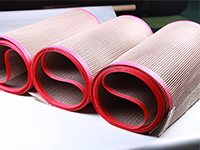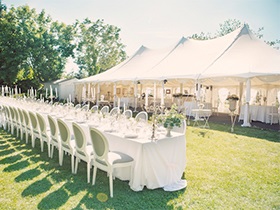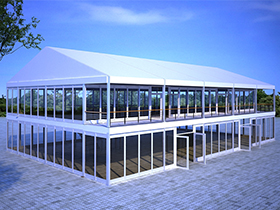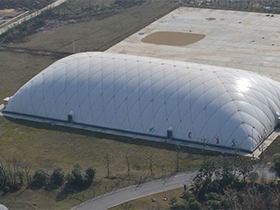Classification and Advantages of Tensile Membranes
November 07,2019

With the development of society, people's material life is constantly improving, and people's spiritual needs are also increasing. The membrane structure is not only used for sports facilities, transportation facilities, cultural facilities, landscape facilities, commercial facilities, industrial facilities. In terms of aspects, it is used more and more widely. It not only has a long service life, but also has a high cost performance and a novel style. Today we will discuss in detail the classification of several membrane structural materials. Its materials are mainly divided into PVC, PTFE and ETFE.
First of all, the membrane structure material has a long service life, a short production cycle, and high heat resistance and cold resistance. The products manufactured are artistic and pleasing to the eye.
1. Membrane structure material - PVC
The chemical nature of PVC, the chemical name of giant chlorinated polyethylene, often added plasticizer, anti-aging agent, UV absorber, stabilizer, lubricant, auxiliary treatment agent, color, impact agent and other additives in actual use. , toughness, ductility, weather resistance and anti-aging properties. PVC has a certain resistance to oxidants, reducing agents and acids. However, additives and plasticizers in PVC can ooze or evaporate from inside the PVC. After the additive has evaporated, the PVC becomes brittle and aged.
PVC films are typically treated with a surface coating to seal volatile additives in the film body to maintain the flexibility and longevity of the PVC.
The surface of the PVC film is usually treated with PVDF. PVDF is an abbreviation for difluorinated resin. It is a high-strength, corrosion-resistant material with a strong abrasion resistance. Self-cleaning and impact resistant, very demanding. It has high resistance to fading and UV rays in harsh environments.
Precautions for using PVC film: PVC film must be protected from surface abrasion, scratches, scratches, etc. The film should be stored in a dry and clean place. Do not use solvent-based (eg alcohol, rosin, acetone, etc.) cleaners to clean the film. When cleaning dust, rinse with clean cold or hot water, then dry with a dry cloth or blow dry with air. Clean organic matter such as bird droppings can be washed with water; or spray detergent and wipe with a cloth.
2. Membrane structure material - PTFE
PTFE Chemical Properties PTFE is resistant to strong corrosive properties such as hydrochloric acid, hydrofluoric acid, acid, nitric acid, hot sodium hydroxide solution or nitrogen chloride. PTFE, can not be dissolved in common volumes such as alcohol, vinegar, ketones and gasoline.
* Lightfast / weather resistant
PTFE is completely resistant to UV, climate and environmental influences. PTFE does not age and become brittle due to exposure to UV light. PTFE materials do not contain plasticizers that are easy to remove. , antioxidants, UV absorbers.
* PTFE membrane surface self-cleaning
Since PTFE seals molecular chains through fluorine atoms, its absorption of other substances is very weak. In the macroscopic world, the surface of PTFE is the lowest of the known materials of about 185 N / M, with non-stick properties. Therefore, the ptfe film exhibits very good self-cleaning properties and water repellency.
* PTFE film whitening
The PTFE membrane is a PTFE coated glass fiber material. PTFE is very inert in the solid state. It must be melted when applied and then applied to the glass fibers. The melting temperature is higher than 400 degrees Celsius and the coating time is about 10 times. During this process, the glass fiber will turn yellow due to high temperature, and the more the coating, the darker the color. Therefore, the PTFE film just produces brown, but the PTFE film absorbs ultraviolet rays from sunlight, and the film becomes whiter and can eventually be used by the sun. The light is completely bleached, the stronger the UV light, the faster the whitening. In the south, it usually takes 4 months, and in the north it takes 6 months. For intimal or indoor use, we recommend the use of pre-bleached membranes.
3. Membrane structure material - ETFE
* High light transmittance
The ETFE film has a light transmittance of up to 95% and can be processed by surface printing to achieve a corresponding light transmittance.
* Self-cleaning
The ETFE film itself has a cost of adhesion, high antifouling, and easy cleaning; surface dust can be naturally removed by rain.
* Good fire resistance
The film is rated to DIN 4012 fire rating B1, has a melting temperature of up to 200 degrees Celsius and does not self-ignite. The quality is very light and the toughness is good. High tensile strength and not easy to tear.
* Lasting quality
Suitable for permanent multi-layer detachable roof structures with a service life of at least 30 years.
* Multiple colors available
Can be customized according to any color
Hot Search:
Previous: What is the Advantages of Landscape Tensile Membrane Structure?
Next: Why Choose Yoga Geodesic Dome Tent?
Archives
News at BDiR

360° Holographic Projection Dome: Technical Analysis and Applications of Immersive Dome Systems
March 27,2025

Luxury Glamping Hotels: Pioneering a New Chapter in the Fusion of Luxury and Nature
March 10,2025

BDIR Stage Membrane Structures: Redefining Event Spaces with Innovation
March 04,2025
Watch Our Videos
Luxury Eco Friendly Tent Structures Lodges for Tea Garden Holiday Hotel
Luxury Sustainable Hospitality Eco Tent Structure Villas


